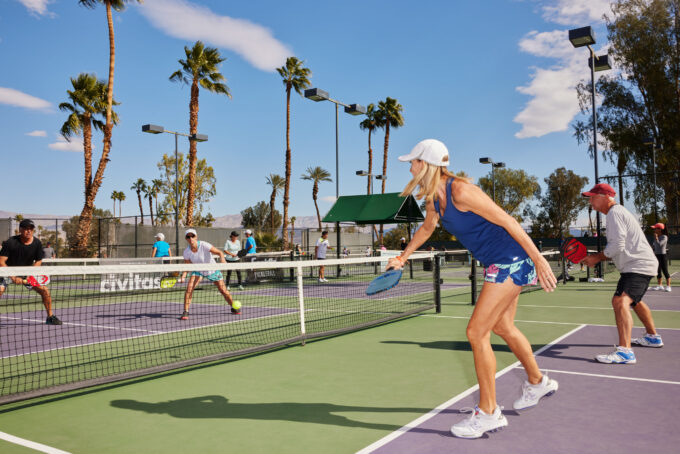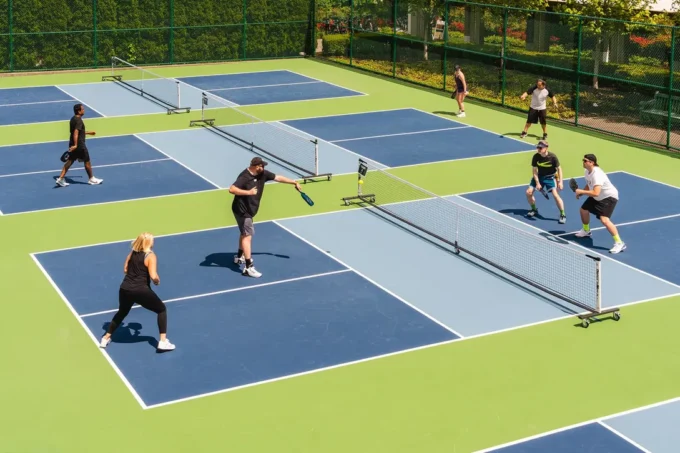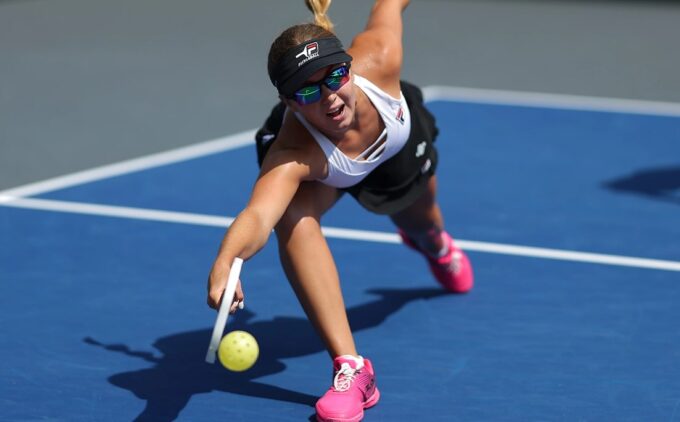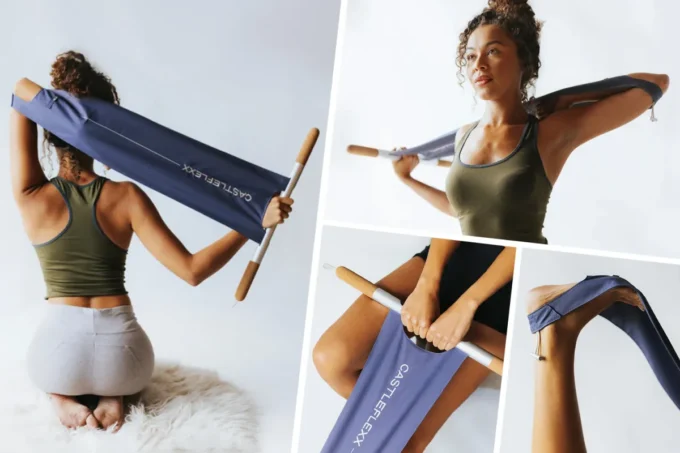
Source: nytimes.com
The popularity of Pickleball has skyrocketed in recent years, especially amongst active seniors who are seeking community, competition, and mobility well into their later years. This low-impact sport enables veterans and beginners alike to benefit both physically and socially on the court – and also achieve success they may have never previously contemplated.
Holistic fitness, including greater flexibility, can push physical limits beyond the limitations once considered the inevitable effects of aging. Seniors inspired by the friendly social nature of pickleball can also achieve high-caliber competitive success through perseverance and preventative care through strategic stretching and muscle-balancing lifestyle integration.
Maintaining flexibility through activities like stretching, yoga, and cardio keeps players rallying their way to medals no matter their age. Portable equipment such as that of CastleFlexx can enhance warmup and cooldown routines at home or in tournaments. Hitting fitness goals ensures that seniors continue dominating matches with younger competitors!
As baby boomers are now entering their sixties and seventies with unprecedented levels of health and vigor, many are taking up pickleball as a fun way to stay active with friends and push their physical limits. Dubbed “the sport of retirement”, pickleball now counts over 4.8 million players across America according to the Sports & Fitness Industry Association (SFIA) 2022 report.
Of this passionate bunch, a full 60% are over the age of 55. In the words of former Masters golf champion Bob Goalby, on playing on the US PGA Seniors Tour, “Once we were all washed up, now we can compete again”. However, in pickleball, you can not only compete against your peers but people of any age and ability – and win!

Source: nike.com
For this reason, pickleball is now far from just a casual pastime. It has competitive leagues, ladder tournaments and championship games in which veterans often school newcomers less than half their age.
Take the inspiring example of pickleball pro Jennifer Dawson. At 60 years old, this phenom holds several medals in national senior games and attributes her quickness and consistency to diligent mobility training. Or there’s 79-year-old Charlotte Hendricks, who sprints around the court disarming opponents decades younger.
There’s also Jim Marsh – a retired university professor who has collected gold across numerous pickleball tournaments in his age division. Though new to the game in his late 60s and undergoing knee replacement surgery, Marsh devoted himself to rigorous mobility work to gain the edge against competitors 20 years his junior.
At last year’s Leisure World International Pickleball Championships Marsh remained unfatigued in three back-to-back matches in 90+ degree heat while half his opponents faded by the finals. He ended up taking home the Men’s 70+ Doubles title.
Success stories like these are convincing boomers and seniors that if they adopt strategic training regimes they too can perform at elite fitness levels, and defy expectations about aging. But dominating on the court requires more than skill.
Maintaining stamina, strength, balance, and flexibility is vital to unleashing the body’s full potential during demanding matches. Here’s how older players can continue winning against all odds.
The Case for Stretching

Source: popsugar.com
Most seniors understand that cardio workouts and strength training improve endurance and power when competing in any sport. But flexibility training is equally essential for several key reasons:
- Prevent injury ─ Stretching loosens muscles and increases the range of motion around the joints, keeping them supple and reducing the chances of enduring strains or tears when making explosive moves and sudden direction changes on the court. Inflexibility, when coupled with weaker muscle mass in older athletes, heightens injury risk.
- Improve mobility ─ As bodies naturally stiffen with age, not only athletic capability but everyday mobility declines. Stretching alleviates tightness and regenerates joints and tendons to give you smooth, comfortable movement in all actions from walking to swinging a pickleball paddle.
- Bolster balance ─ Limited flexibility in the hips, knees, and ankles impacts stability, contributing to falls. Stretching the connective “stabilizer” tissues enhances the balance essential during quick pivots, lunges, and side shuffles chasing the ball.
- Alleviate soreness ─ Micro tears and inflammation in muscles after intense matches will cause lingering soreness. This is remedied by stretching, which increases blood flow, reduces tension, flushes out lactic acid, and speeds recovery before the next game.
Now we know why seniors should make flexibility training as much a habit as cardio or lifting, what’s the most effective approach?
Maintaining range of motion becomes harder with age, as collagen production slows and muscles fatigue more easily. This makes passive stretching using strap-based mobility tools ideal for achieving steady long-term gains without overexerting.
There are several such tools around – but the aim is to win, not mess around trying to discover what works while others are reaping greater benefits. So here’s a guide to the best avenues available to stretch for success.
Stretching Devices for Pickleball Longevity

Source: insidehook.com
Portable, easy-to-use devices like those in the CastleFlexx range have proved the best way to deliver assisted stretching and increased tension without the need for a partner or trainer. Their strap and foam leg roller design targets hamstrings, inner thighs, hips, back, and torso – all typical problem zones for pickleball players who would otherwise struggle with the typical mobility issues that hinder performance.
Using CastleFlexx consistently before and after matches or practice yields tangible results. Senior pickleballers will both feel these and see them translated into gameplay victories, even against younger opponents at their peak athletic prime.
Here’s a snapshot of the key things a proper stretching device can do for avid players over 55:
- Relax tight hamstrings ─ Tense hamstrings sap speed and rotational power. CastleFlexx stretches them deeply, raising anchors behind the knee for maximum release of tension. Players regain flexibility, and thus more forceful swings and rapid positioning.
- Increase hip mobility ─ Stiff hips reduce the lunging capacity key for volleys at the non-volley zone line. Targeted stretching of sockets and connective tissue restores the range of motion necessary for fluid lateral dives and quick response exchanges.
- Open tight shoulders ─ Tightness in the rotator cuff and deltoids in the serving arm’s shoulders cause fatigue, limiting smash power potential. Sustained stretching keeps shoulders supple enough for you to make dozens of forceful overhand serves per game without wearing out.
- Stretch the lower back ─ Lower back tightness from spinal degeneration or posture issues reduces the ability to generate torque when serving and hitting. Focused lumbar and flank stretches realign the spine, relieving compression to create a looser, more resilient core.
Mobility aids, sufficient hydration, magnesium and collagen supplementation, and receptive muscle therapies are also recommended to accelerate and enhance stretching outcomes. But conveniently portable tools like Castlelflexx give seniors the power to take charge of maintaining age-defying stamina and flexibility solo, whenever and wherever.
Now core and peripheral mobility limitations need not deter pickleball enthusiasts from playing at the height of their talents well into retirement and beyond. Get out there and show them you are not a number!



